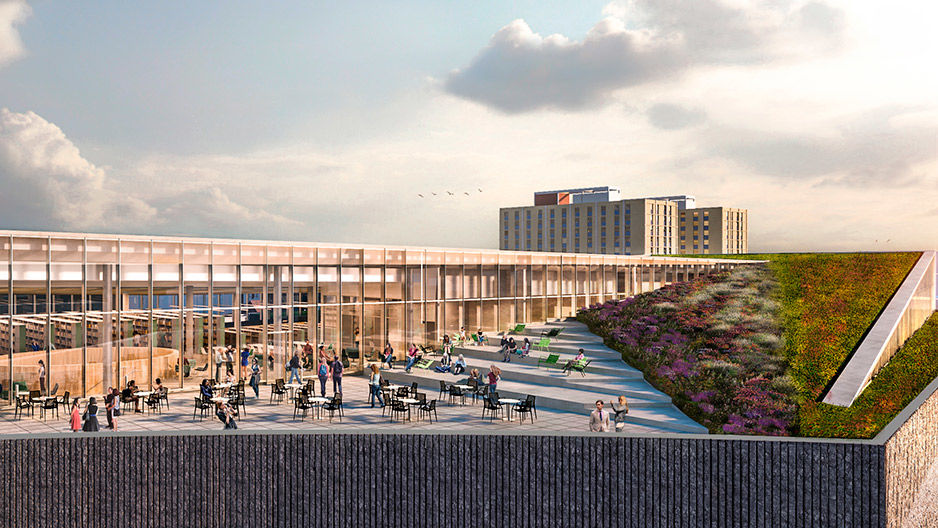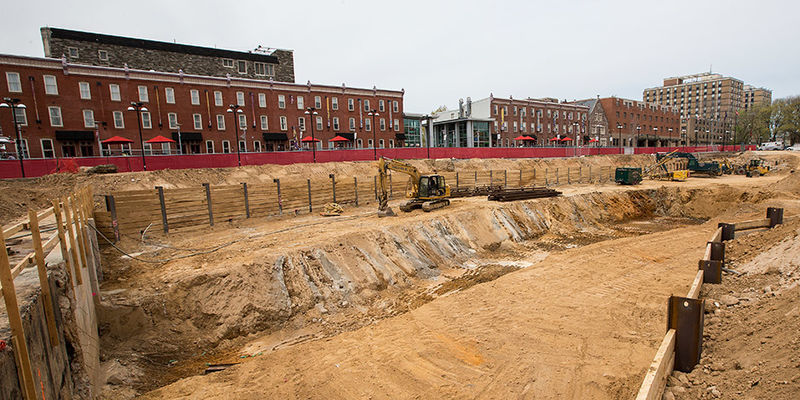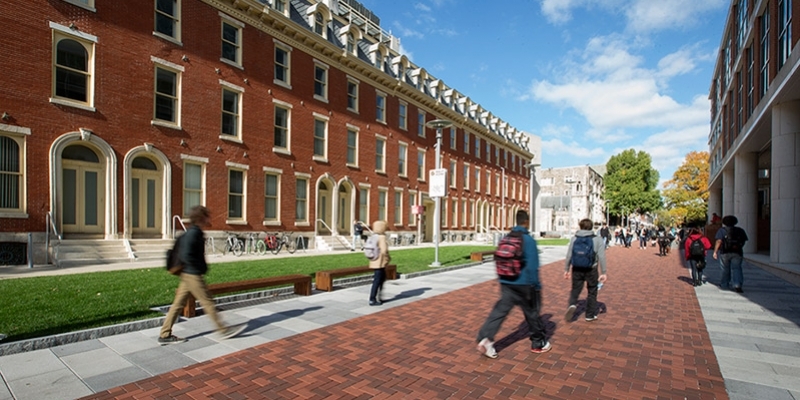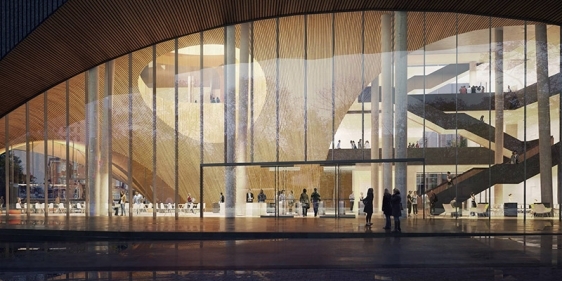New library receives state support for massive green roof
A state agency provided Temple University with more than $6.7 million in low-interest loan funding for the project.

Temple University’s new library will feature one of Pennsylvania’s largest green roofs and other stormwater management systems that recently received more than $6.7 million in low-interest loan funding from the commonwealth.
Gov. Tom Wolf announced in late April that Temple’s library was one of seven water-infrastructure projects supported by the Pennsylvania Infrastructure Investment Authority (PENNVEST). The $6,747,933 loan Temple received will help the university install a green roof, permeable paving, rainwater harvesting stormwater piping to help stop erosion and sediment runoff from entering the already burdened public sewer and stormwater systems serving North Philadelphia.
The PENNVEST loan will also save Temple $4 million because of its low interest rate (approximately 1 percent) and a shorter loan term (20 years instead of 30).
“The sustainability features of our new library are based on Temple’s approach to design bold, innovative projects while also thoughtfully engineering them to lower energy requirements and stormwater runoff,” Temple President Neil D. Theobald said. “We appreciate the state’s investment in this transformative project, which will serve our environment as well as it serves our students, faculty and staff.”
The green roof will be the most dramatic element of the stormwater system designed for the new library site. In addition to the 46,000-square-foot roof garden—covering nearly the length of a city block—the project includes an underground infiltration basins, permeable pavement, and planting beds. All these features will work together to collect stormwater and either retain or detain that water before slowly releasing it back into the soil.
The plant material, with a color scheme of blue, green, purple and white, will include a variety of grasses and sedum, as well as flowering perennials such as coneflowers, coral bells, liatris, purple poppies and yarrow. In addition to absorbing stormwater, the green roof will act as a thermal barrier to help regulate building temperature.
Commitment to sustainability
The new library’s stormwater management system illustrates a larger commitment to sustainable building strategies at Temple. The university’s landscape plan, Verdant Temple, contributes to Temple’s goals for increased environmental sustainability while reducing the costs associated with stormwater runoff.
In addition, a variety of newer buildings at Temple have attained LEED (Leadership in Energy and Environmental Design) certification from the U.S. Green Building Council, which rates projects in one of four levels: certified, silver, gold and platinum.
The Mitchell and Hilarie Morgan Residential and Dining Complex, the Montgomery Avenue Parking Garage and the Tyler Architecture building—home to Temple’s first rooftop gardens—have all obtained LEED silver status. Temple’s Science Education and Research Center, which opened in fall 2014, was the first university building to achieve gold.
Sustainability strategies in Temple’s construction projects have included highly engineered glass to reduce heat gain inside buildings, mechanical systems to reuse energy, and better processes for trash and recycling.


